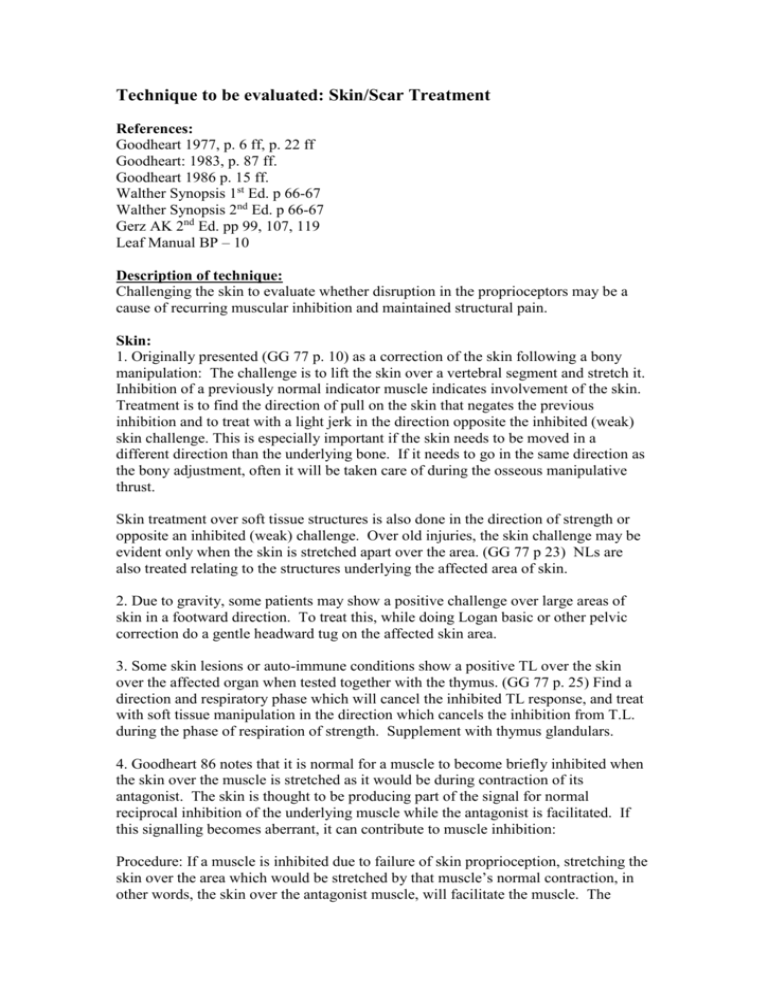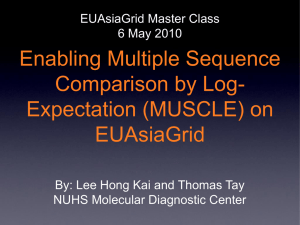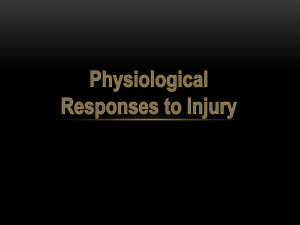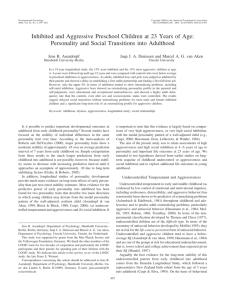Skin/Scar Treatment
advertisement

Technique to be evaluated: Skin/Scar Treatment References: Goodheart 1977, p. 6 ff, p. 22 ff Goodheart: 1983, p. 87 ff. Goodheart 1986 p. 15 ff. Walther Synopsis 1st Ed. p 66-67 Walther Synopsis 2nd Ed. p 66-67 Gerz AK 2nd Ed. pp 99, 107, 119 Leaf Manual BP – 10 Description of technique: Challenging the skin to evaluate whether disruption in the proprioceptors may be a cause of recurring muscular inhibition and maintained structural pain. Skin: 1. Originally presented (GG 77 p. 10) as a correction of the skin following a bony manipulation: The challenge is to lift the skin over a vertebral segment and stretch it. Inhibition of a previously normal indicator muscle indicates involvement of the skin. Treatment is to find the direction of pull on the skin that negates the previous inhibition and to treat with a light jerk in the direction opposite the inhibited (weak) skin challenge. This is especially important if the skin needs to be moved in a different direction than the underlying bone. If it needs to go in the same direction as the bony adjustment, often it will be taken care of during the osseous manipulative thrust. Skin treatment over soft tissue structures is also done in the direction of strength or opposite an inhibited (weak) challenge. Over old injuries, the skin challenge may be evident only when the skin is stretched apart over the area. (GG 77 p 23) NLs are also treated relating to the structures underlying the affected area of skin. 2. Due to gravity, some patients may show a positive challenge over large areas of skin in a footward direction. To treat this, while doing Logan basic or other pelvic correction do a gentle headward tug on the affected skin area. 3. Some skin lesions or auto-immune conditions show a positive TL over the skin over the affected organ when tested together with the thymus. (GG 77 p. 25) Find a direction and respiratory phase which will cancel the inhibited TL response, and treat with soft tissue manipulation in the direction which cancels the inhibition from T.L. during the phase of respiration of strength. Supplement with thymus glandulars. 4. Goodheart 86 notes that it is normal for a muscle to become briefly inhibited when the skin over the muscle is stretched as it would be during contraction of its antagonist. The skin is thought to be producing part of the signal for normal reciprocal inhibition of the underlying muscle while the antagonist is facilitated. If this signalling becomes aberrant, it can contribute to muscle inhibition: Procedure: If a muscle is inhibited due to failure of skin proprioception, stretching the skin over the area which would be stretched by that muscle’s normal contraction, in other words, the skin over the antagonist muscle, will facilitate the muscle. The treatment is to stretch and vigorously vibrate the skin over the antagonist muscle. Alternatively, this area of skin may be treated with an acupuncture instrument which can produce a low intensity, 300 Hz current. Supplement with vitamin B complex. If a muscle fails to become inhibited when the skin over it is stretched as it would be by contraction of its antagonist, this is also seen as a failure of skin proprioception. The treatment is to treat that skin by stretching and vibrating the skin. This is seen in areas with skin lesions such as psoriasis and acne. 5. Leaf suggests challenging the skin over weak muscles to find a direction and a phase of respiration, each of which returns the muscle to normal facilitation. Treat as above. When starting with a normally facilitated muscle, if a directional challenge to the skin weakens the underlying muscle, treatment is tugging and vibration opposite to the direction which caused inhibition, on the phase of respiration of strength. SKIN GENERAL RULE: Treat in the direction opposite the inhibited challenge during the phase of respiration which negated the positive T.L. (Direction of strength on the phase of respiration of strength) Scar: 1. A positive TL to a scar is treated spraying with a topical cold spray, or ice massage, while stretching the scar tissue and then putting the part through all of its ranges of motion. Repeat the cold spray/ stretch and mobilization until the TL does not recur after motion. Goodheart notes that a scar may only therapy localize when tested against specific muscles related to the organs associated with the patient’s symptoms or the site of a visceral surgery. (GG 83) 2. Leaf also refers to the use of the B & E points in the treatment of scars and injured tissue; whereby the relevant B & E point that negates the challenge is tapped for 60 seconds. 3. Gerz talks of scars as being important sites for Therapy Localization and Challenge, and refers to the fact that scars will commonly cause disruption in the flow of energy in the underlying meridian. He makes reference also to scars in the midline of the body being a cause of switching. 4. Goodheart and Gerz refer also to the use of neural therapy or procaine injections to treat scars. Recommendation: This procedure has been in the A.K. literature for over 3 years with minimal disagreement among sources. Accordingly, the recommended rating is Approved. Tracy S Gates 5/02, expanded by Katharine Conable 8/13/03









